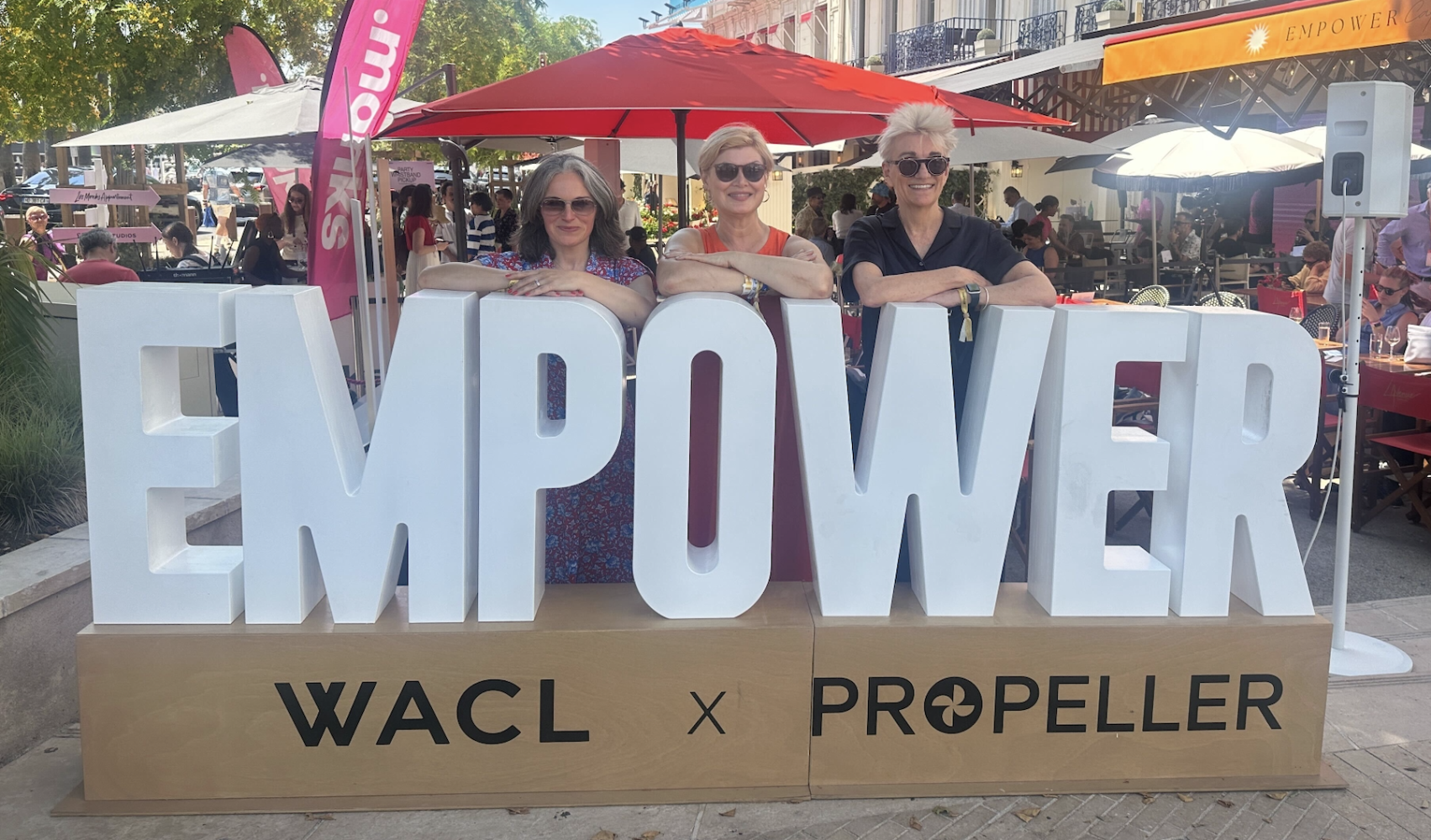At this year’s Empower Café during Cannes Lions Festival of Creativity, Household’s CEO and Co-Founder Julie Oxberry joined Nadine Heggie, Vice President of Partnerships at National Geographic (part of The Walt Disney Company), for a rich and insightful conversation about the changing role of brand experience. Together, they explored how today’s most forward-thinking businesses are creating not just moments — but worlds — where fans feel seen, included, and deeply engaged.
Chaired by Rose Bentley, Chief Client Officer at Propeller, the panel unpacked how fandom, storytelling, and co-creation are transforming the future of brand engagement.
“It’s less brand activation and more fan invitation.” — Julie Oxberry
From Flagships to Fanbases
Julie began by sharing the story of Harry Potter New York, the flagship retail experience Household designed for Warner Bros during the pandemic. But, as she was quick to point out, this was never just a store.
“It’s a portal into the Wizarding World,” she said. “A space where fans can walk through the doors and feel like they’ve stepped into the story.”
Built over three years, the experience blends immersive tech, storytelling, and interactivity — including QR-code integrations that allow visitors to go deeper, win prizes, and connect with characters. Since opening, the store has welcomed over 2 million annual visitors and driven more than 59 million views on TikTok.
Julie’s takeaway: the most impactful experiences aren’t transactional — they’re transformational. “We’re not designing for customers,” she added. “We’re designing for fans.”
Building Worlds with Purpose
Nadine followed with an example from National Geographic’s partnership with LEGO to launch the Arctic Explorer range. The campaign included an in-person build experience at National Geographic’s Washington D.C. headquarters, where families collaborated to construct a life-sized woolly mammoth out of LEGO bricks.
“It was joyful, meaningful storytelling,” said Nadine. “We brought together scientists, storytellers, editors, and LEGO Master Builders — and families came from all over to take part.”
For Nadine, the experience was not only a brand success, but personally resonant. “As a mum of two LEGO-obsessed boys, it was special to connect my family life with my work.”
Together, these stories set the tone for the panel: that belonging is what separates good brand experiences from great ones. Whether through physical spaces, immersive storytelling, or interactive media, brands now have the opportunity — and responsibility — to help fans feel part of something bigger.
Creating Belonging, Not Just Branding
Julie and Nadine both agreed that live experiences turn passive interest into shared identity. “That moment of ‘I was there’ becomes part of someone’s own story,” said Julie. “It’s unforgettable — and it doesn’t feel like marketing.”
Nadine reflected on National Geographic’s long-standing relationship with its audience, describing it as “the original membership-based fan organisation.” From iconic print subscriptions to today’s global expeditions and retail spaces, National Geographic continues to offer fans curated experiences that go far beyond content.
One example: National Geographic Expeditions, which enables travellers to join photographers and scientists on journeys to places like Antarctica or the Galápagos Islands — blending learning, adventure, and storytelling in one seamless fan-first offering.
Both speakers emphasised that truly meaningful brand experiences must be co-owned. “Fans are creators too,” said Julie. “Look at Taylor Swift fans creating bracelets for the Eras tour. They’re shaping the experience themselves. Our job is to give them a world to build in.”
Innovation with Authenticity
Innovation, both agreed, is only impactful when it serves the story. Nadine pointed to National Geographic’s partnership with Rolex, which supported a record-breaking expedition to Mount Everest. To bring that to life digitally, the team launched an Instagram AR filter that allowed fans to ‘stand’ at the summit, complete with misted goggles and interactive storytelling.
“It wasn’t tech for tech’s sake,” she said. “It was meaningful, and it was built with scale and integrity.”
Julie spoke about the importance of layered storytelling — giving fans more than what they expect, in ways that are consistent and emotionally resonant. “Fans know the world inside out,” she said. “They’re looking for authenticity, depth, and details that prove you understand it too.”
Measuring What Matters
When it comes to proving value, both speakers shared a broader view of success.
Julie introduced Return on Experience (RoE) — a concept Household uses to measure the emotional and cultural value of brand experience. “It’s about more than ROI,” she explained. “You measure it in joy, in stories shared, and in how far people go to bring others into the world you’ve created.”
Nadine spoke about trust and longevity. “We’re incredibly proud to have partners who’ve been with us for decades — some for over 70 years,” she said. “When a brand tells you, ‘We trust you. You tell our story,’ that’s when you know it’s working.”
Trust the Story, Trust the Fans
The panel concluded with reflections on control, curation, and collaboration. “Don’t fake it,” said Julie. “Fans can smell inauthenticity a mile off. They know more than you — and they should be part of the process.”
Nadine added that authenticity requires responsible curation, especially when working with iconic editorial brands like National Geographic. “You have to show up in a way your audience recognises — and that your partners trust. That’s the craft.”
Ultimately, both speakers agreed: if the experience begins with authenticity and is shaped in partnership with the community, it builds trust. And trust builds longevity — something every brand should aspire to.
“It’s not about control. It’s about curation. About collaboration. And about letting the fan story come through.” — Nadine Heggie

